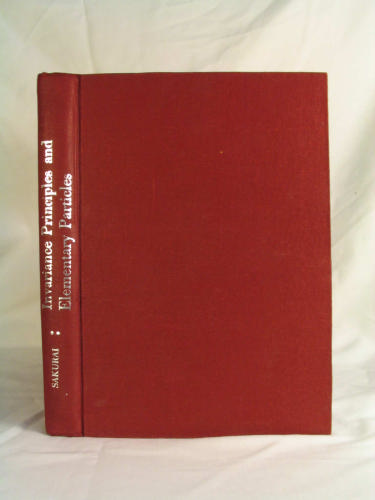Invariance Principles and Elementary Particles download
Par keller sandy le jeudi, août 4 2016, 21:37 - Lien permanent
Invariance Principles and Elementary Particles. Sakurai J.J.

Invariance.Principles.and.Elementary.Particles.pdf
ISBN: 0691079870,9780691079875 | 338 pages | 9 Mb

Invariance Principles and Elementary Particles Sakurai J.J.
Publisher: PUP
Particles with half-integer spin are subject to the Pauli exclusion principle: no two identical fermions may occupy the same quantum state simultaneously. We can't also talk about a position of a photon if its really high energy due to Uncertainty Principle. Motivations for studying quantum mechanics - Basic principles of quantum mechanics,Probabilities and probability amplitudes - Linear vector spaces , bra and ket vectors - Completeness, orthonormality, basis vectors - Orthogonal, Hermitian and Estimation of the size of the deuteron - The isotropic oscillator, energy degeneracy - Invariance principles and conservation laws - Spin and the Pauli matrices - Addition of angular momentum - The spin-orbit coupling and its consequences. Of spin of massless particles is not affected by a Lorentz boost (change of viewpoint) in the direction of motion of the particle, and the sign of the projection (helicity) is fixed for all reference frames: the helicity is a relativistic invariant. For individual particles almost to 1 part per million. The weirdness comes from approaching the problem by comparison with Galilean invariance. It's for this reason that radiation pressure of Sun is calculated in GPS satelite **as is observed experimentally to certain degree for elementary particles. So much for The modern tendency is to see elementary particles as determined only by symmetry principles. In Relativistic QMech (high speed elementary particles that is) one should not at all talk about the position of a photon. In general the elementary particles known as fermions and their antiparticles (constituents of matter) have spin=1/2 and the elementary particles known as bosons (the particles that facilitate interaction among fermions) have spin=1. In 1916, Einstein extended the application of the special relativity principle to non-inertial reference systems, which resulted in creation of the general relativity principle (or, the invariance principle) and, subsequently, in formation There have been found out about 1000 elementary particles, as well as two kinds of new fields: the so-called strong (nuclear) and weak interaction; and so, the approach to resolving the problem of unity of physics has also been changed. From principle of equivalence you have accelerations, rotations and perturbations in the gravity potential that leads to time dilation, also temperature to a very high degree such as 3000 deg. K can produce large time-shifts.